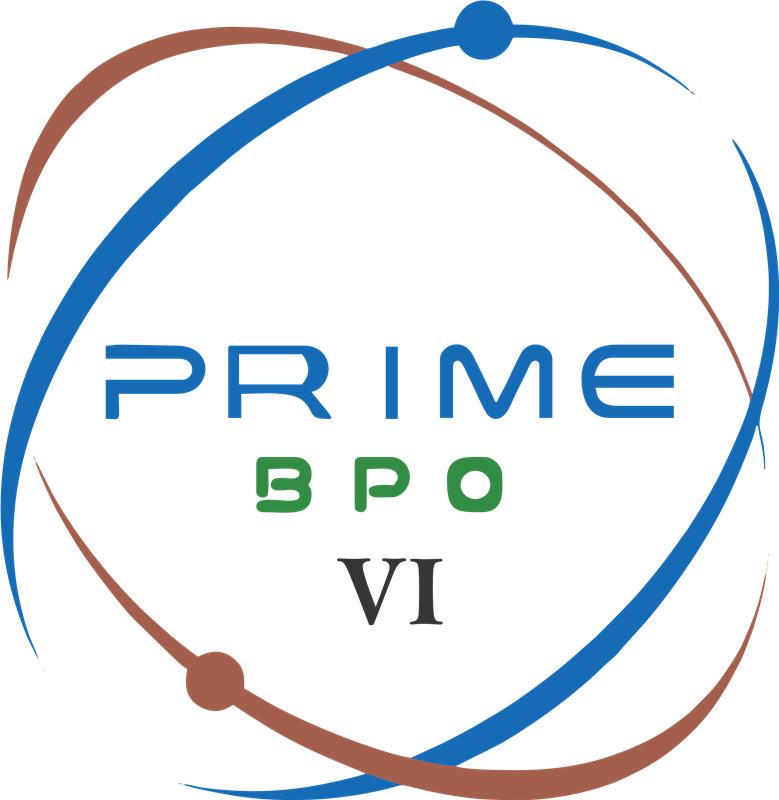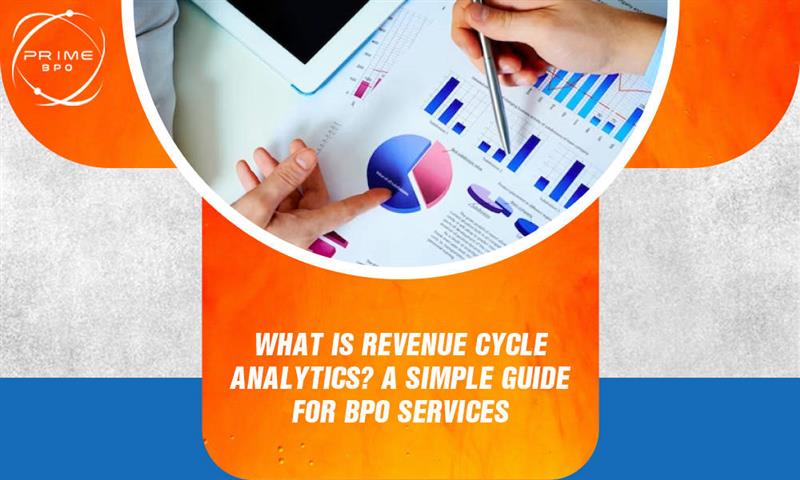In today’s data‑driven economy, understanding what revenue cycle analytics can transform how organizations manage billing, claims, and cash collections. At Prime BPO, we leverage advanced analytics and offshore expertise to streamline every stage of your revenue cycle—reducing denials, accelerating payments, and maximizing profitability.
1. What Is Revenue Cycle Analytics?
Revenue cycle analytics is the systematic process of gathering, integrating, analyzing, and visualizing financial and operational data produced across the lifecycle of a transaction, from the moment a service is documented to the final payment. While often associated with healthcare (analyzing billing, coding, and claims), the same principles apply in e‑commerce, logistics, and professional services.
Key stages of the revenue cycle:
- Service Capture – Documenting the service rendered or product delivered (e.g., patient visit data in an EHR, order fulfilment in Magento).
- Coding & Billing – Translating services into billable codes (CPT/ICD in healthcare; SKU/pricing codes in retail).
- Claims Submission or Invoice Generation – Sending claims to payers or invoices to customers.
- Payment Posting – Recording payments received, adjustments, and write‑offs.
- Denial & Rejection Management – Identifying and appealing denied claims or disputed invoices.
- Accounts Receivable (A/R) Follow‑Up – Proactive outreach on overdue balances.
- Reporting & Forecasting – Using dashboards and predictive models to project cash flow and identify process gaps.
By employing revenue cycle management analytics, organizations can see where revenue “leaks” occur—whether through unsubmitted claims, excessive denials, data entry errors, or slow collections—and implement targeted remedies.
2. Revenue Cycle Analytics Benefits
Let’s dive deeper into the specific gains you can expect.
|
Benefit Category |
Specific Outcome |
Example Metric Improvement |
|
Efficiency |
Streamlined workflows, reduced manual tasks |
30% faster claim submission |
|
Denial Reduction |
Fewer rejected claims or disputed invoices |
25% reduction in denial rate |
|
Cash Acceleration |
Shorter days in A/R, improved cash forecasting |
A/R days lowered from 50 to 35 days |
|
Decision Quality |
Data‑driven strategic planning |
20% more accurate revenue forecasts |
|
Revenue Recovery |
Identification of unbilled services |
Recovery of 5% of previously lost revenue |
2.1 Improve Revenue Cycle Efficiency
- Automated data validation flags missing or incorrect fields before submission.
- Workflow optimization assigns follow‑up tasks based on denial reason codes.
2.2 Reduce Claim Denials
- Root‑cause analytics classifies denials by error type (coding, eligibility, documentation).
- Trend analysis identifies spikes in denials tied to specific departments or payers.
2.3 Increase Cash Flow
- Predictive forecasting uses historical data to model expected payments.
- What‑if scenarios simulate the impact of staffing changes on collections velocity.
2.4 Mitigate Revenue Leakage
- Gap analysis compares services rendered versus billed.
- Alert systems notify billing teams of unbilled encounters older than X days.
Real‑world mini‑case: A mid‑size hospital saw a 20% lift in monthly cash collections within three months by deploying RCA dashboards highlighting underpaid CPT codes; they then retrained coders on high‑error code sets.
3. Core Components & Tools
Building a robust analytics capability requires the right infrastructure:
|
Layer |
Technology Examples |
SEO Terms to Include |
|
Data Integration |
ETL tools (Informatica, Talend), APIs |
data warehouse revenue cycle, Canada accounting |
|
Storage & Warehousing |
Cloud data lakes (Snowflake, AWS Redshift) |
data warehouse revenue cycle |
|
BI & Reporting |
Power BI, Tableau, Looker |
Revenue Cycle Analytics Dashboard, BI tools for revenue cycle |
|
Advanced Analytics |
Python/R models, H2O.ai, Azure ML |
Machine learning revenue cycle, predictive analytics in healthcare |
|
Workflow Automation |
UiPath, Blue Prism (RPA) |
Automation revenue cycle management |
Tip: When describing “revenue cycle analytics software,” mention integration with EHR/EMR systems (Epic, Cerner) and e‑commerce platforms (Magento).
4. Step‑by‑Step Implementation
Let’s expand each implementation step with best practices:
4.1 Data Collection & Integration
- Assess data sources: EHR (Epic, Cerner), practice management, ERP, Magento order system.
- Implement ETL pipelines: Schedule nightly jobs to pull new records.
- Data quality checks: Validate field completeness, format, and referential integrity.
4.2 KPI Definition & Alignment
- Financial KPIs:
- Days in A/R (target: <40 days)
- Net collection rate (target: >95%)
- Operational KPIs:
- First‑pass claim acceptance rate
- Average denial resolution time
4.3 Analytics Model Development
- Descriptive Analytics: Historical trends, variance analysis.
- Predictive Analytics: Regression models forecasting denials or cash receipts.
- Prescriptive Analytics: Optimization algorithms to suggest staffing levels.
4.4 Visualization & Reporting
- Dashboard design principles:
- Highlight 3–5 critical KPIs.
- Use traffic‑light indicators for thresholds.
- User roles:
- Executives see high‑level metrics.
- Billing managers drill down by department/payer.
4.5 Continuous Improvement
- Regular audits: Monthly data accuracy reviews.
- Model retraining: Quarterly updates to predictive algorithms.
- Feedback loop: Incorporate user feedback into dashboard enhancements.
5. Outsourcing Revenue Cycle Analytics
Outsourcing your analytics can accelerate deployment and reduce costs:
|
Outsourcing Aspect |
In‑House Challenge |
BPO Advantage |
|
Talent Acquisition |
Hiring analysts, data engineers |
Access to skilled teams in multiple geographies |
|
Infrastructure Costs |
Software licenses, hardware |
Shared platforms, cloud‑based tools |
|
Scalability |
Limited by headcount |
Scale up/down rapidly based on project needs |
|
24/7 Operations |
Local business hours only |
Offshore centers provide round‑the‑clock coverage |
|
Compliance & Security |
Building secure environments |
ISO‑certified, HIPAA/GDPR‑compliant BPO facilities |
5.1 Service Models
- Project‑based: One‑time implementation, dashboard build.
- Managed services: Ongoing data integration, analytics, and reporting.
- Hybrid: Client handles strategy; BPO executes data pipelines and dashboards.
5.2 Prime BPOs Offering
- Data engineering: ETL setup, data warehousing.
- Analytics: KPI definition, predictive modeling, dashboard creation.
- Support: 24/7 monitoring, helpdesk for analytics queries.
Companies using offshore revenue cycle management report up to 40% cost savings and 30% faster analytics turnaround.
6. Industry‑Specific Applications
6.1 Healthcare Use Case
- Challenge: High denial rates due to coding errors.
- Solution: RCA dashboards flagged top‑error CPT codes; targeted coder training reduced denials by 25%.
6.2 E‑Commerce Use Case
- Challenge: Discrepancies between Magento order data and invoicing.
- Solution: Integrated Magento data entry services with analytics to reconcile orders daily; reduced order-to-cash cycle from 15 to 7 days.
6.3 Logistics Use Case
- Challenge: Under‑billing on freight services.
- Solution: Beltmann Integrated Logistics leveraged RCA to compare carrier invoices vs. contract rates; recovered 4% additional revenue.
6.4 Accounting & Professional Services
- Challenge: Multi‑jurisdiction billing (e.g., Canada accounting rules, IFRS).
- Solution: Automated data normalization for Canadian GAAP, feeding into unified dashboards.
7. Offshore & Global Considerations
When operating globally:
- Time‑zone coverage: Karachi, Manila, Toronto—enable continuous data processing.
- Regulatory compliance:
- HIPAA for U.S. healthcare.
- PIPEDA for Canada accounting data.
- GDPR for EU customer information.
- Data security: AES‑256 encryption, SOC 2 Type II audits.
- Cultural alignment: Local language support, training on terminology (medical codes, logistics terms).
8. Measuring ROI & Success Metrics
To quantify impact:
|
Metric |
Baseline |
Post‑Analytics |
Improvement |
|
Days in A/R |
50 days |
35 days |
–30% |
|
Denial rate |
12% |
8% |
–33% |
|
Net collection rate |
92% |
97% |
+5 pp |
|
Claims processed per FTE/day |
20 |
28 |
+40% |
|
Revenue leakage recovered |
1.5% of rev. |
5% of rev. |
+3.5 pp |
Steps to track ROI
- Baseline assessment before analytics deployment.
- Monthly performance dashboards for key metrics.
- Quarterly business reviews with stakeholders.
- Adjust models based on real‑world outcomes.
Showing a clear before‑and‑after comparison helps secure executive buy‑in for continued investment.
9. Frequently Asked Questions (FAQ)
What is revenue cycle analytics definition?
Revenue cycle analytics is the data‑driven analysis of billing, claims, and payment processes to optimize revenue capture and cash flow.
How does outsourcing RCM analytics work?
When you outsource, a BPO team handles your data integration, dashboard creation, and ongoing analysis—often using offshore resources to deliver cost savings and around‑the‑clock support.
Can BPOs handle Canada accounting for analytics?
Yes. Prime BPO’s finance specialists are certified in Canadian GAAP and PIPEDA‑compliant data handling, so they can incorporate Canada accounting rules into your analytics.
What ROI can I expect from analytics?
Clients typically see a 20–30% reduction in days‑in‑A/R, a 10–25% drop in claim denials, and recovery of 3–5% of previously lost revenue.
Which industries benefit most from RCA?
Any sector with complex billing flows can benefit—healthcare, e‑commerce (Magento), logistics (e.g., Beltmann Integrated Logistics), professional services, and more.
How long does implementation take?
A basic analytics dashboard can be live in 6–8 weeks; a full predictive analytics rollout typically takes 3–6 months.
10. Conclusion
You now have a deep, actionable understanding of what is revenue cycle analytics—from foundational definitions to advanced predictive modelling, and from in‑house build to outsourced revenue cycle analytics.
Key takeaways:
- Analytics transforms billing and collections through data‑driven insights.
- Outsourcing to Prime BPO delivers cost, expertise, and 24/7 scalability.
- Industry‑specific use cases prove ROI across healthcare, e‑commerce, and logistics.
- Rigorous measurement ensures continuous improvement and stakeholder buy‑in.
Ready to unlock your revenue potential?
- Contact Prime BPO for a free consultation on offshore revenue cycle management.
- Download our Analytics Starter Kit: a checklist and template dashboards.
- Schedule a demo to see real‑time RCA dashboards in action.
Get Free Quotes
Customized Options Await
By partnering with Prime BPO—your trusted BPO services provider—you’ll harness the full power of revenue cycle analytics to drive growth, efficiency, and profitability.






